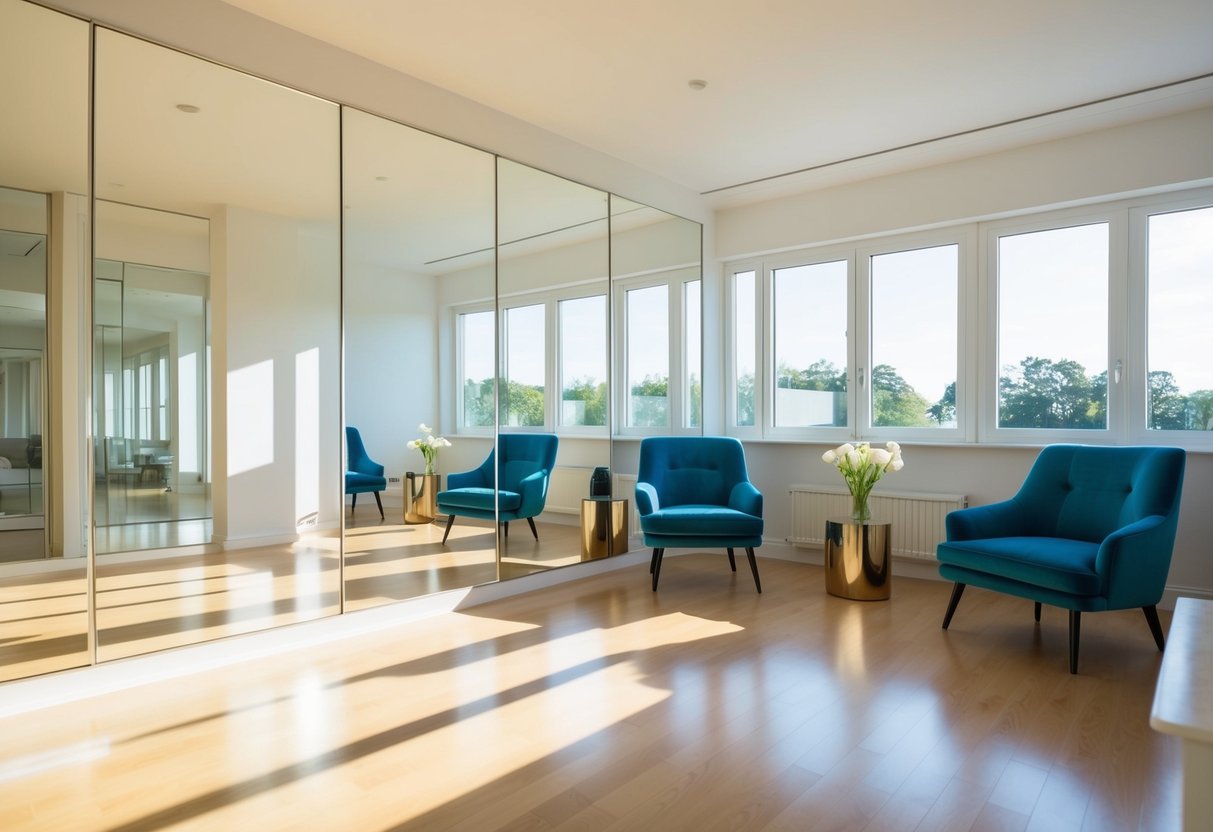Maximizing Natural Light: Clever Home Decor Strategies for a Brighter Space
Window Design and Placement
Properly designed and thoughtfully placed windows can dramatically enhance the natural light in any home. Choosing the right windows and optimizing their placement are essential elements to ensure a brighter and more inviting space.
Strategies for Window Optimization
Windows play a crucial role in how light enters a home. Placing windows on south-facing walls maximizes sunlight, especially during winter. This positioning allows for the most consistent and beneficial natural lighting throughout the year.
Using taller windows allows more light to filter into the home. The placement of transom windows above doors brings in additional light while maintaining privacy.
Another strategy is to use sliding or French windows, which not only offer aesthetic appeal but also large window panes that invite more sunlight indoors.
Selection of Glass and Glazing Methods
The type of glass and glazing chosen for windows has a significant impact on light optimization and energy efficiency. Double-glazed windows provide effective insulation while allowing ample natural light. They consist of two layers of glass with a gap in between, which reduces heat loss.
Low-E (Low Emissivity) glass has a special coating that reflects heat while letting light in, thus maintaining a comfortable indoor temperature. Another option is tempered glass, which is four to five times stronger than standard glass and provides both safety and enhanced light penetration.
Choices in tinted glass can also affect the natural light. Lightly tinted or clear glass maximizes brightness while still offering UV protection. It’s crucial to consider these factors to choose glass that balances natural light with energy efficiency.
Innovative Use of Mirrors and Reflective Surfaces

Incorporating mirrors and reflective surfaces is a brilliant way to enhance natural light and create the illusion of more space in any room.
Placement of Mirrors
Strategic placement of mirrors can amplify light and make rooms appear larger. Hanging a mirror opposite a window reflects natural light back into the room. Placing mirrors behind light sources such as lamps or candles can further brighten a space. Mirrors in narrow hallways or small rooms can create depth, making them seem more spacious.
Mirrors should also be placed in areas where they can reflect interesting features, such as architectural details or outdoor views. Large, framed mirrors can act as statement pieces, drawing attention while serving a functional purpose. In multifunctional spaces, mirrored furniture can blend aesthetics with usability, adding both light and style.
Choosing Reflective Decor Elements
Reflective surfaces, such as metal and glossy finishes, can also enhance light in a room. Metallic fixtures like chrome, brass, and stainless steel capture and reflect light, providing a luminous touch. Glossy finishes on furniture, like a lacquered table or a high-gloss cabinet, spread light and add a modern feel.
Incorporating light-reflective surfaces doesn’t stop with mirrors and furniture. Reflective tiles in kitchens and bathrooms can increase brightness. Glass or mirrored backsplashes are effective in bouncing light around these spaces. Reflective wall art and accessories can also complement and heighten this effect, ensuring an integrated, light-filled environment.



